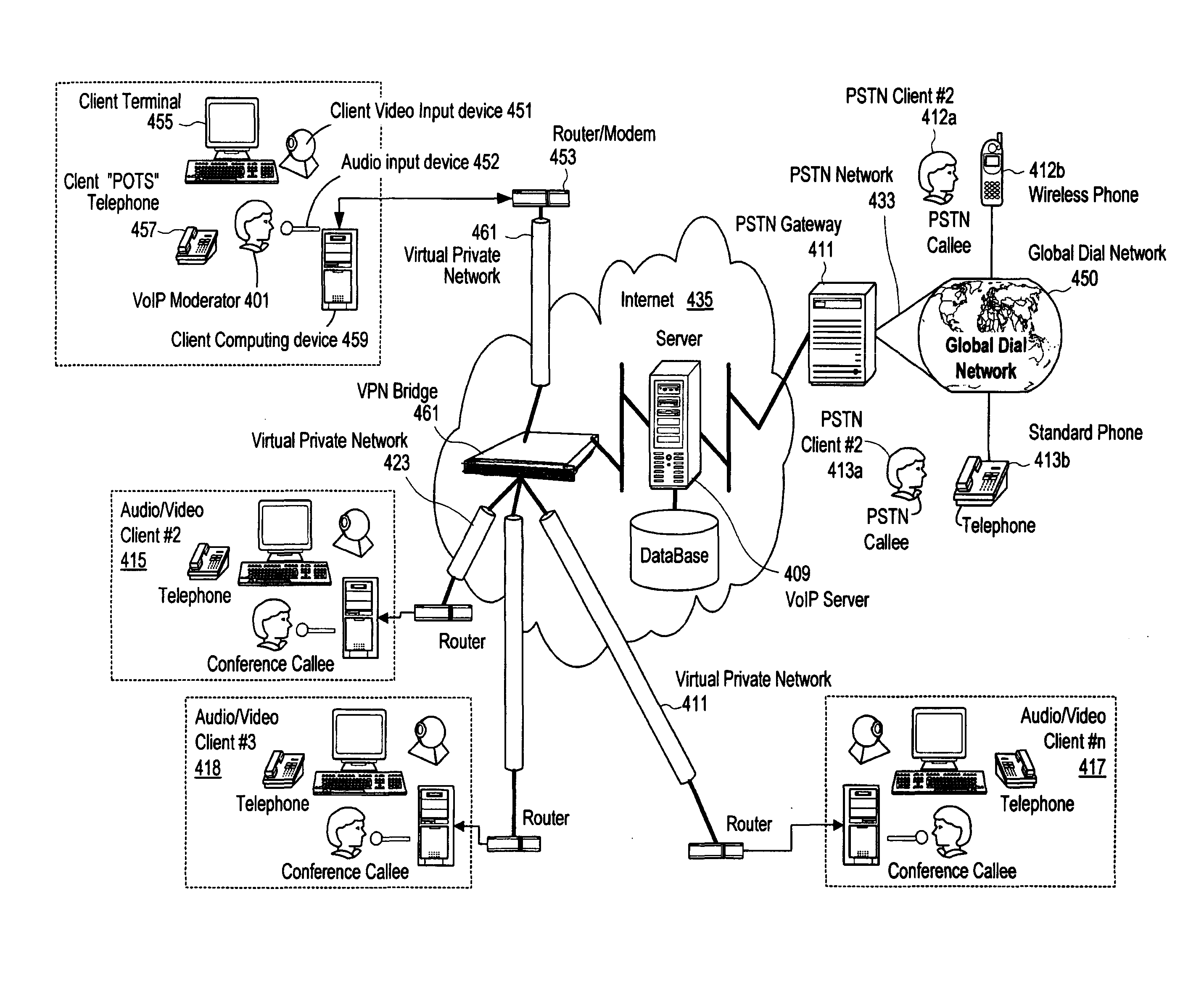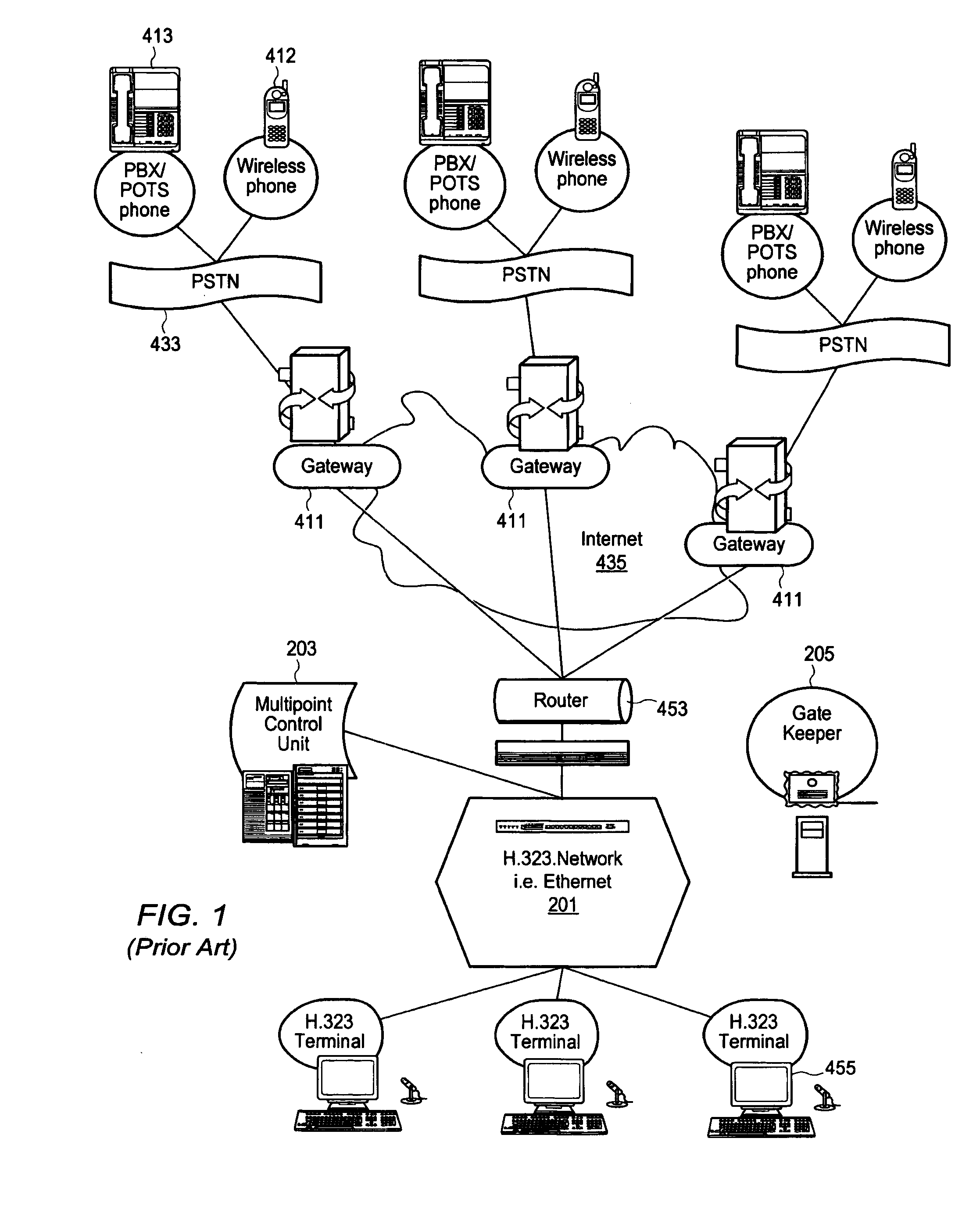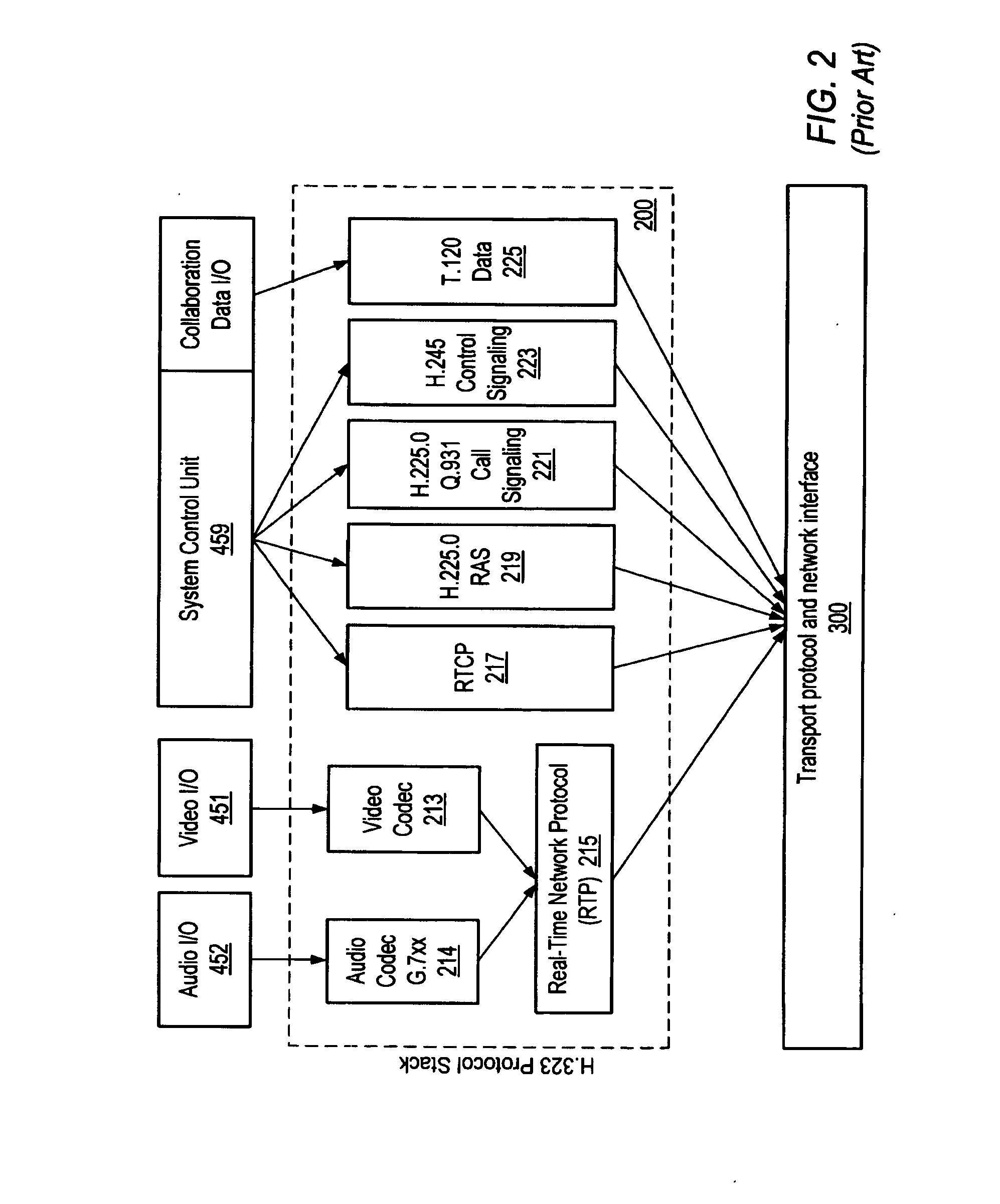Media Based Collaboration Using Mixed-Mode PSTN and Internet Networks
a technology of mixed-mode pstn and internet networks, applied in the field of computer system architectures, can solve the problems of low frame rate and low quality communication, drop of audio, loss of lip sync,
- Summary
- Abstract
- Description
- Claims
- Application Information
AI Technical Summary
Benefits of technology
Problems solved by technology
Method used
Image
Examples
Embodiment Construction
Incorporation by Reference
[0029]The following applications and references are hereby incorporated by reference as though fully and completely set forth herein.
[0030]U.S. application Ser. No. 10 / 446,407 titled “Transmission Of Independently Compressed Video Objects Over Internet Protocol”, Dye et al. filed May 28, 2003
[0031]U.S. application Ser. No. 10 / 620,684 titled “Assigning Prioritization During Encode Of Independently Compressed Objects, Dye, et al. filed on Jul. 16, 2003.
[0032]International Telecommunications Union Recommendation H.323, Titled “Packet Based Multimedia Communication System.” November, 2000
[0033]International Telecommunications Union Recommendation H.261, Titled “Video Coding for Audio Visual Services at P×64 kbps.”
[0034]International Telecommunications Union Recommendation H.263, Titled “Video Coding for Low Bit-Rate Communications” February, 1998
[0035]One embodiment of the present invention uses a decentralized model for multipoint conferencing. The multipoint ...
PUM
 Login to View More
Login to View More Abstract
Description
Claims
Application Information
 Login to View More
Login to View More - R&D
- Intellectual Property
- Life Sciences
- Materials
- Tech Scout
- Unparalleled Data Quality
- Higher Quality Content
- 60% Fewer Hallucinations
Browse by: Latest US Patents, China's latest patents, Technical Efficacy Thesaurus, Application Domain, Technology Topic, Popular Technical Reports.
© 2025 PatSnap. All rights reserved.Legal|Privacy policy|Modern Slavery Act Transparency Statement|Sitemap|About US| Contact US: help@patsnap.com



